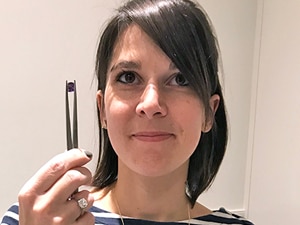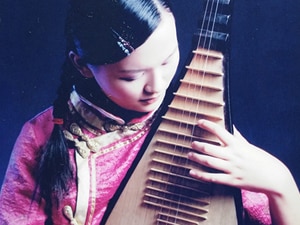Hobbies of Our People Around the World
From beekeeping to furniture making, our people have a wide range of interests and hobbies. Check out what some of them are up to when out of the office:
ARCHERY/KENDO
Sean Fan
Merchant Banking, Beijing
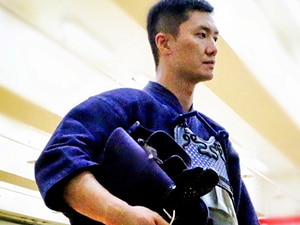 About six years ago, I broke my finger in a basketball game and was looking for a new sport that did not require the use of my little finger. I started archery and kendo, which fit that requirement. I fell in love with both sports and have been practicing them ever since.
About six years ago, I broke my finger in a basketball game and was looking for a new sport that did not require the use of my little finger. I started archery and kendo, which fit that requirement. I fell in love with both sports and have been practicing them ever since.
Both archery and kendo are ways for me to strengthen my mental focus. With archery, I find that I’m better at hitting targets when I focus on a smaller circle that I can control. That circle of focus starts with my hand that is stabilizing the bow grip to my other hand which is pulling back the bow string. In competitive archery, the target is typically so far away that it appears to be a small blurry dot. 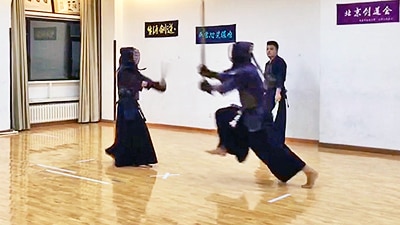 When I focus 100 percent on my posture, muscles and movement, I get much better results.
When I focus 100 percent on my posture, muscles and movement, I get much better results.
To achieve a distant goal, I find that it is better to focus on the small things that I can control today. That’s been a philosophical learning for me from these hobbies.
GEMMOLOGY
Julie Duval
Securities, Paris
I started studying gemmology after a horse riding accident in 2003 left me with two broken vertebras and plenty of free time on my hands. At the time, many of my friends, who were getting engaged, were complaining that their lack of knowledge about jewels prevented them from assessing whether a ring was properly priced. That's how it all started. I registered at the Paris-based Gemmological Association of Great Britain to prepare for the Gemmology Foundation exam, which I passed in 2007. Studying for the exam was intense and covered a mix of geology, optics and chemistry. I learned how to identify rough and faceted stones; how to evaluate gems under a microscope; and how to price them.
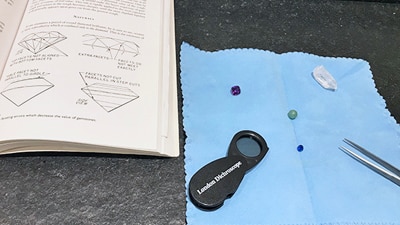 Learning how to differentiate fake from real diamonds made me popular amongst my soon-to-be engaged friends, and later on with my colleagues. I still draw engagement rings for friends and buy stones for them at Hatton Garden, which is London’s jewelry quarter. The best part is when vendors watch me getting my refractometer and my lens out of my pocket, and suddenly offer to bring me a "better quality" stone!
Learning how to differentiate fake from real diamonds made me popular amongst my soon-to-be engaged friends, and later on with my colleagues. I still draw engagement rings for friends and buy stones for them at Hatton Garden, which is London’s jewelry quarter. The best part is when vendors watch me getting my refractometer and my lens out of my pocket, and suddenly offer to bring me a "better quality" stone!
CALLIGRAPHY/PIPA
Yuze Feng
Compliance, Beijing
I started practicing Chinese calligraphy when I was 3 years old (as my mother is an art teacher), and I learned how to play pipa (a four-stringed Chinese musical instrument) when I was 11 years old. I have continued to practice both throughout my life.
Calligraphy is one of the ways I can express myself while also absorbing the wisdom from traditional Chinese culture. Pipa transports me into another world where I can, for the time I’m playing, lose myself in the stories of other people. I feel refreshed and find more inner peace after practicing.
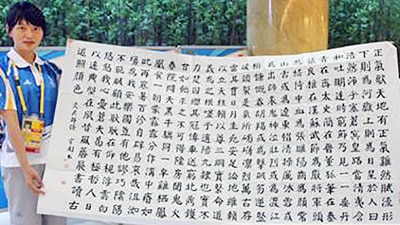 I’ve won several national prizes for my calligraphy, and I used to be the leader in my university’s Chinese Orchestra. In the 2008 Beijing Olympic Games, I was selected out of 200,000 volunteers to be the volunteer for Jacques Rogge, the president of the International Olympic Committee. I sent him my calligraphy as a gift.
I’ve won several national prizes for my calligraphy, and I used to be the leader in my university’s Chinese Orchestra. In the 2008 Beijing Olympic Games, I was selected out of 200,000 volunteers to be the volunteer for Jacques Rogge, the president of the International Olympic Committee. I sent him my calligraphy as a gift.
MAGIC
Stephane Gehin
Engineering, Tokyo
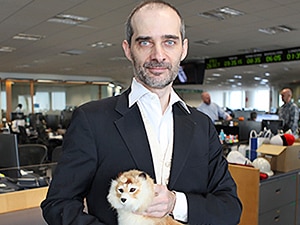 My interest in performing magic started at the age of six when I saw a Spanish magician named Garcimore on TV. I remember being unimpressed by his foolish comedy style, but at the climax of his trick, I was flabbergasted. It is indeed a well-known principle in magic to lower spectators’ expectations, which in turn increases the power of the surprise. I grew up practicing magic for my friends and family, and had my first paid gigs in college, mostly performing in other colleges and birthday parties.
My interest in performing magic started at the age of six when I saw a Spanish magician named Garcimore on TV. I remember being unimpressed by his foolish comedy style, but at the climax of his trick, I was flabbergasted. It is indeed a well-known principle in magic to lower spectators’ expectations, which in turn increases the power of the surprise. I grew up practicing magic for my friends and family, and had my first paid gigs in college, mostly performing in other colleges and birthday parties.
After moving to Japan, I took my hobby to the next level and became a professional magician, working in restaurants, at wedding parties and corporate events. Of course, I also casually perform for my friends and family, as well as strangers at the occasional random encounter!. You can also see me perform at Goldman Sachs, for example during the annual Halloween show for children or at a year-end party.
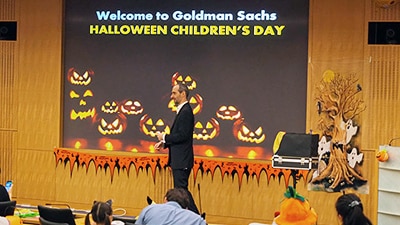 Magic can be an efficient way to set the mood, especially with strangers. When performing for someone you have never met in a casual situation, this is of course totally unexpected, and the Japanese people are very receptive and expressive. I usually receive warm appreciations, which can break the ice and creates wonderful memories.
Magic can be an efficient way to set the mood, especially with strangers. When performing for someone you have never met in a casual situation, this is of course totally unexpected, and the Japanese people are very receptive and expressive. I usually receive warm appreciations, which can break the ice and creates wonderful memories.
Gradually, my hobby transitioned into a need to assemble all these bits of knowledge to create routines or new sequences of tricks which I thought could have an increasing impact. Magic is an incredibly creative and innovative field: I follow the evolution of almost every trick on the market while also creating routines for my own shows. Throughout it all, I’ve been driven by a compulsive need to understand how every trick works.
CRAFTING
Claire Leblanc
Executive Office, New York
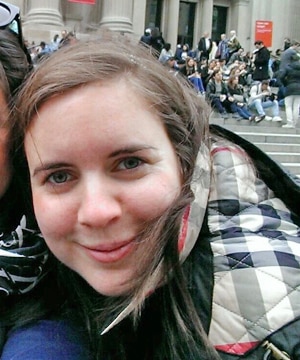 My crafting is amateurish at best – but some of my favourite projects were making the invitations and other stationery for my sister’s wedding and for my parents’ 30th wedding anniversary. They gave me some guidelines (my sister: brown and bronze hues, something that would loosely match her wedding venue; my parents: something for their “pearl” anniversary that would make a nod to the places they’ve lived—where they spent time with the friends and family who’d join the celebration).
My crafting is amateurish at best – but some of my favourite projects were making the invitations and other stationery for my sister’s wedding and for my parents’ 30th wedding anniversary. They gave me some guidelines (my sister: brown and bronze hues, something that would loosely match her wedding venue; my parents: something for their “pearl” anniversary that would make a nod to the places they’ve lived—where they spent time with the friends and family who’d join the celebration).
Perhaps because I don’t take it too seriously, crafting is quite soothing for me. It’s fun to discover a new technique, such as foil laminating or heat embossing with powder, and applying it. I most appreciate the process when each part of assembling an item becomes muscle memory, and repeating the steps—without really needing to focus—offers time to think.
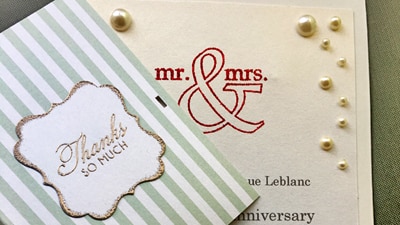 I ended up doing the stationery for my wedding too, from the invitations and programs, to the place cards and even little “eat me” and “drink me” tags for the canapés and midnight snacks! I’ve been on a bit of a hiatus on big projects after that since it was quite the undertaking, but next up are 2019 Christmas cards (totally behind schedule).
I ended up doing the stationery for my wedding too, from the invitations and programs, to the place cards and even little “eat me” and “drink me” tags for the canapés and midnight snacks! I’ve been on a bit of a hiatus on big projects after that since it was quite the undertaking, but next up are 2019 Christmas cards (totally behind schedule).
BREAKDANCING
Akihiro Omura
Human Capital Management, Tokyo
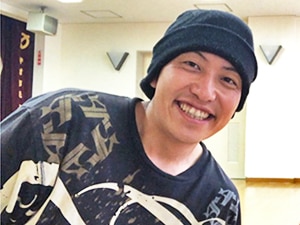 I started breakdancing when I was in high school. The breakdancing moves were fascinating to me because they made me think that there was no limit to what the human body could achieve. Since, I have continued to practice breakdancing, mainly on streets and at stations, learning from others who had different backgrounds and skillsets.
I started breakdancing when I was in high school. The breakdancing moves were fascinating to me because they made me think that there was no limit to what the human body could achieve. Since, I have continued to practice breakdancing, mainly on streets and at stations, learning from others who had different backgrounds and skillsets.
I enjoy the fact that each dancer has his or her own style, which enables me to expand on my own moves. Now, I like to take my five-year-old son with me when I practice breakdancing with my friends on the weekends.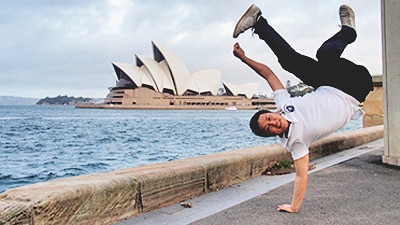
Although my son is still too shy to try out the moves for himself, I enjoy the exposure he gets by interacting with people with different backgrounds, who can move in unique ways.
MOTORSPORT PHOTOGRAPHY
Bright Osemwegie
Investment Banking, London
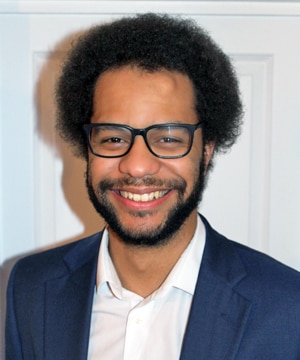 I’ve been a motorsport enthusiast ever since I can remember. To this day, I still love playing simulation racing games. As a teenager, I entered competitions for simulator racing and won at various events. This was just before e-sports started to take off. I ended up working for a company that built simulators during the summers in between my university years, which gave me the opportunity to travel to various events such as the French MotoGP at Le Mans and the British Formula 1 Grand Prix at Silverstone. This was where I started to try my hand at motorsport photography.
I’ve been a motorsport enthusiast ever since I can remember. To this day, I still love playing simulation racing games. As a teenager, I entered competitions for simulator racing and won at various events. This was just before e-sports started to take off. I ended up working for a company that built simulators during the summers in between my university years, which gave me the opportunity to travel to various events such as the French MotoGP at Le Mans and the British Formula 1 Grand Prix at Silverstone. This was where I started to try my hand at motorsport photography.
I began with just still shots on my DSLR camera, which don’t fully capture the sense of speed or drama that is associated with witnessing 200mph+ racing cars. I started to experiment with the DSLR’s manual capabilities and the results were constantly improving. The biggest challenge is keeping up with the car in the viewfinder and getting the right shot!
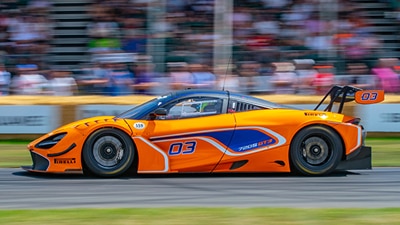 I realized that the higher the risk, the better the reward. At the beginning, the majority of my shots came out blurry and unusable. However, the useable shots exceeded my expectations. Combined with a few edits to maximize the use of lighting and colours, the picture quality improved further. Practice does make perfect. The most satisfying element in the process is getting the right camera settings and capturing the essence of a car flying past.
I realized that the higher the risk, the better the reward. At the beginning, the majority of my shots came out blurry and unusable. However, the useable shots exceeded my expectations. Combined with a few edits to maximize the use of lighting and colours, the picture quality improved further. Practice does make perfect. The most satisfying element in the process is getting the right camera settings and capturing the essence of a car flying past.
FRUIT AND VEGETABLE CARVING
Teeraphon Pongkittiphan
Engineering, Tokyo
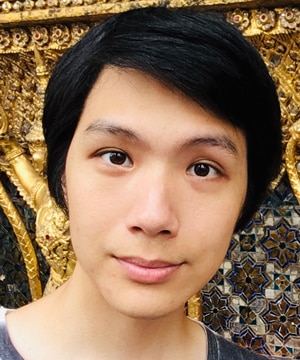 After inheriting a carving knife from my sister, I first learned the Thai art of fruit and vegetable carving in a handcraft class in the third grade. My task was to cut a carrot into a five centimeter circle, shape it into a star and carve its surface to make it look like a flower. I was so excited with my first masterpiece that I kept it in a refrigerator (of course, it spoiled within days).
After inheriting a carving knife from my sister, I first learned the Thai art of fruit and vegetable carving in a handcraft class in the third grade. My task was to cut a carrot into a five centimeter circle, shape it into a star and carve its surface to make it look like a flower. I was so excited with my first masterpiece that I kept it in a refrigerator (of course, it spoiled within days).
After I joined Goldman Sachs in 2016, I attended a flower arrangement club meeting hosted by Tomoki Tani, a colleague in the Tokyo office. It encouraged me to brush up my carving skill again.
I flew back to Bangkok during a winter holiday and took an intensive carving course at a career training center, where the instructor encouraged us to bring a carving knife and BYOVF (Bring Your Own Vegetable and Fruit). The BYOVF style allowed me to design my own learning path. During the week, we covered everything from basic to advanced carving skills.
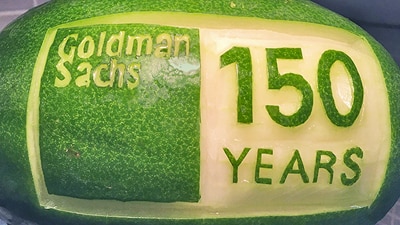 There are three aspects of carving that I find most interesting and enjoyable. First, it was that practice makes perfect. You can learn any new skill when you give it enough focus and repetition. Second, carving taught me to be more mindful, patient and to live in the moment. Because it can take more than an hour to carve a whole fruit, you have to be mindful and careful with every movement of the knife. The third is to just trust your instincts at times. After getting stuck with not being able to execute a technical movement, I decided to allow my hand muscles to move freely – without overthinking – and allow those muscles to feel the movement.
There are three aspects of carving that I find most interesting and enjoyable. First, it was that practice makes perfect. You can learn any new skill when you give it enough focus and repetition. Second, carving taught me to be more mindful, patient and to live in the moment. Because it can take more than an hour to carve a whole fruit, you have to be mindful and careful with every movement of the knife. The third is to just trust your instincts at times. After getting stuck with not being able to execute a technical movement, I decided to allow my hand muscles to move freely – without overthinking – and allow those muscles to feel the movement.
Since my motto is to pursue lifelong learning, I am still continuing to improve and broaden my carving skills and hope to take up wood carving as my next goal.
ULTIMATE FRISBEE
Kerry Clark
Human Capital Management, Tokyo
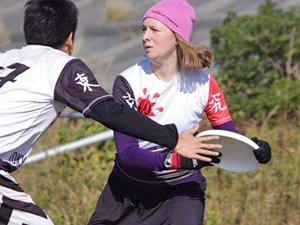 I started playing Ultimate Frisbee when I first moved to Tokyo in 2005, and was able to become a core member of a team there as it developed over the years. I have been lucky enough to travel and compete in tournaments all over, even representing Japan in the World Ultimate Club Championships in 2010 in Prague and 2014 in Italy.
I started playing Ultimate Frisbee when I first moved to Tokyo in 2005, and was able to become a core member of a team there as it developed over the years. I have been lucky enough to travel and compete in tournaments all over, even representing Japan in the World Ultimate Club Championships in 2010 in Prague and 2014 in Italy.
After starting a family, it became harder to travel to tournaments and play at a competitive level but I still enjoy playing Ultimate Frisbee recreationally. Determined to stay active as a working mum, I joined a group called Mom in Balance in Tokyo, a Dutch-founded company with franchises around the world including Singapore, London and New York. Mom in Balance offers safe but challenging outdoor workouts for women at all stages of pregnancy, post-partum and beyond.
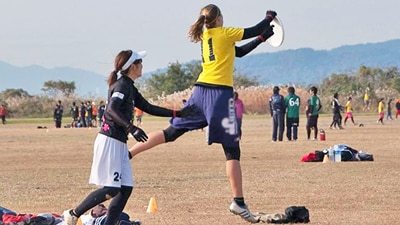 I started with the group in 2016 after having my first child, and continued working out through my next pregnancy and after having my second child in 2018. I decided to become a trainer myself to share my passion for being physically active and the benefits it brings to mums and mums-to-be. It's a great way to bring women together and promote physical and mental wellbeing. Earlier this year, after much study and practice, I became a certified trainer and now teach a weekly class in Japanese and English.
I started with the group in 2016 after having my first child, and continued working out through my next pregnancy and after having my second child in 2018. I decided to become a trainer myself to share my passion for being physically active and the benefits it brings to mums and mums-to-be. It's a great way to bring women together and promote physical and mental wellbeing. Earlier this year, after much study and practice, I became a certified trainer and now teach a weekly class in Japanese and English.
ROCK CLIMBING
Jonathan Seror
Risk, Warsaw
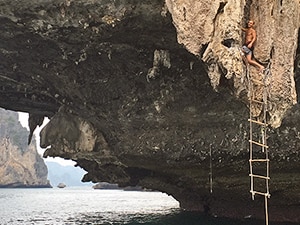 I started rock climbing at a very young age and discovered deep water soloing in Southeast Asia where I lived for three years. It is unusual to find cliffs hanging above patches of deep water. Such spots can typically be found only in the islands of Southeast Asia. It is a challenging sport, both physical and psychologically. The higher the climb, the scarier the jump, but ultimately, it is safe if practiced properly.
I started rock climbing at a very young age and discovered deep water soloing in Southeast Asia where I lived for three years. It is unusual to find cliffs hanging above patches of deep water. Such spots can typically be found only in the islands of Southeast Asia. It is a challenging sport, both physical and psychologically. The higher the climb, the scarier the jump, but ultimately, it is safe if practiced properly.
BEEKEEPING
Karen Seymour
Legal, New York
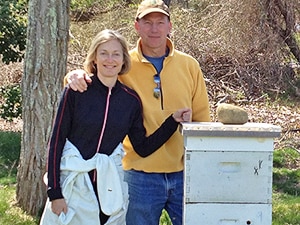 I began beekeeping about 10 years ago, after attending a fireside chat hosted by The Nature Conservancy on Shelter Island about the declining bee population. I asked how we could help, and the answer was simple: keep bees. So I signed up for a class at New York City Beekeepers Association and began beekeeping at our place on Shelter Island. We have a couple of hives, which yield more honey than we can consume! Bees are fascinating, and I am still learning about them. And I have never been stung!
I began beekeeping about 10 years ago, after attending a fireside chat hosted by The Nature Conservancy on Shelter Island about the declining bee population. I asked how we could help, and the answer was simple: keep bees. So I signed up for a class at New York City Beekeepers Association and began beekeeping at our place on Shelter Island. We have a couple of hives, which yield more honey than we can consume! Bees are fascinating, and I am still learning about them. And I have never been stung!
FURNITURE MAKING
Steve Turbek
Engineering, New York
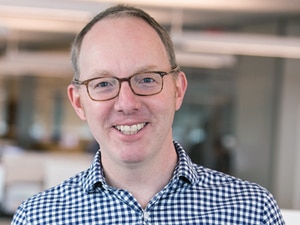 I started making furniture in college. A pivotal moment for me was studying in Copenhagen, home to some truly wonderful mid-century furniture designers, like Hans Wegner and Arne Jacobsen. What impressed me most was that normal people in Denmark had this famous furniture in their homes—
I started making furniture in college. A pivotal moment for me was studying in Copenhagen, home to some truly wonderful mid-century furniture designers, like Hans Wegner and Arne Jacobsen. What impressed me most was that normal people in Denmark had this famous furniture in their homes—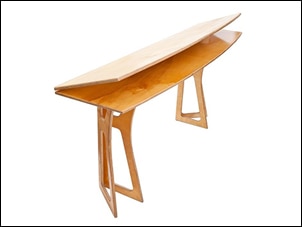 it was made to be used, not just for museums. The best part of furniture making is getting to use your hands on materials, whether it be wood, steel or glass. You start with some vague inspiration, keep sketching until you figure out the details, make some prototypes, and stick with it until you have a physical object you can live with. The fun is in the process as much as the result.
it was made to be used, not just for museums. The best part of furniture making is getting to use your hands on materials, whether it be wood, steel or glass. You start with some vague inspiration, keep sketching until you figure out the details, make some prototypes, and stick with it until you have a physical object you can live with. The fun is in the process as much as the result.
CAVE DIVING
Debby Wijayakusuma
Human Capital Management, Singapore
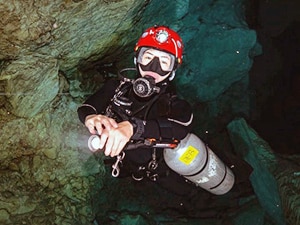 I am an avid scuba diver and was looking to take my skills to the next level. I decided to venture into technical diving and was introduced to the world of cave diving one year ago. I fell in love with it instantly. It is a completely different and surreal experience to explore an untouched underground environment.
I am an avid scuba diver and was looking to take my skills to the next level. I decided to venture into technical diving and was introduced to the world of cave diving one year ago. I fell in love with it instantly. It is a completely different and surreal experience to explore an untouched underground environment.
There’s the excitement of always finding something new, whether it be stalactites, stalagmites or decorated chambers that simply take your breath away. Not only do I have a better appreciation of speleology (which is the study of caves) and the importance of cave conservation, cave diving also teaches me to be calm and increase my awareness.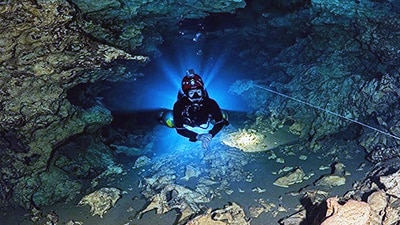
Now I spend all my leave days going on cave diving trips with a group of cave divers where we will make it one of our missions to explore and discover new underwater caves. The pictures are of me cave diving in Sulawesi, Indonesia, which is currently my favorite destination.
TAI CHI
Angela Yu
Executive Office, Beijing
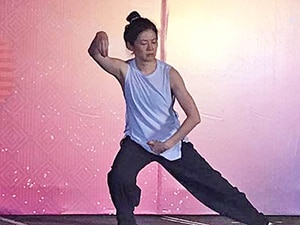 I have been fascinated with Tai Chi—specifically the Chen Style—since I was very young, but it was only in 2011 when I met two of my respected masters that I started to learn from them to practice it. What is magic to me is that no matter when and where I practice Tai Chi, I feel calm and focused. That’s the only time I feel naturally relaxed, with energy flowing into my body.
I have been fascinated with Tai Chi—specifically the Chen Style—since I was very young, but it was only in 2011 when I met two of my respected masters that I started to learn from them to practice it. What is magic to me is that no matter when and where I practice Tai Chi, I feel calm and focused. That’s the only time I feel naturally relaxed, with energy flowing into my body.
Tai Chi is a philosophy and attitude in life which helps me explore the essence and beauty of breath, control, balance and details; the idea is that your energy and inner powers transfer seamlessly. Indeed, I am a beneficiary of the practice and enjoy the journey.
I won a gold medal of the Fifth International Wushu Competition, Singapore 2017, K Shanmugan Cup and a silver medal of the 2nd Public Health Non-Profit Competition 2016 hosted by Beijing Broadcasting and TV Paper.


